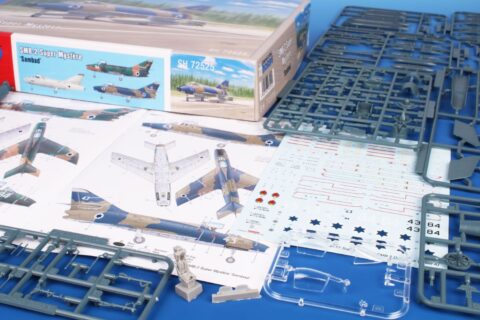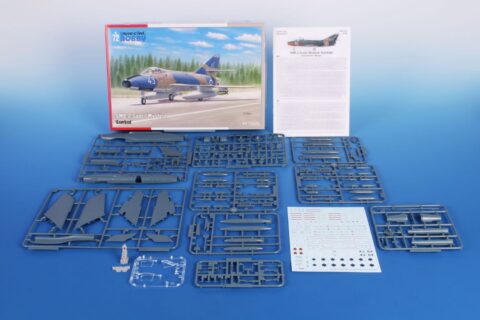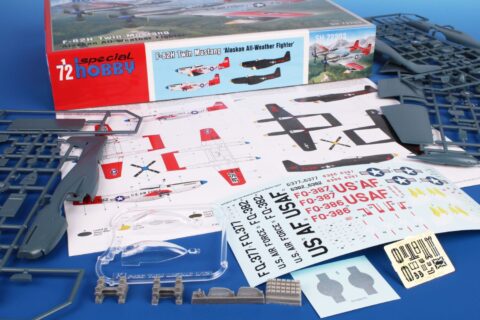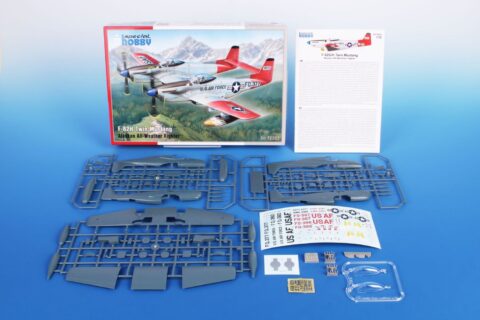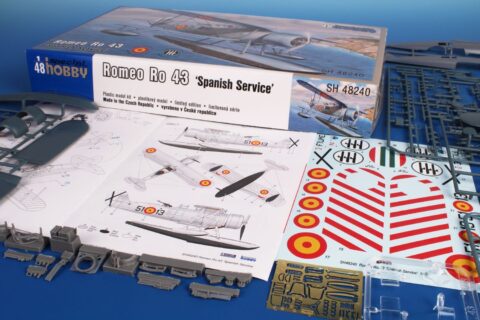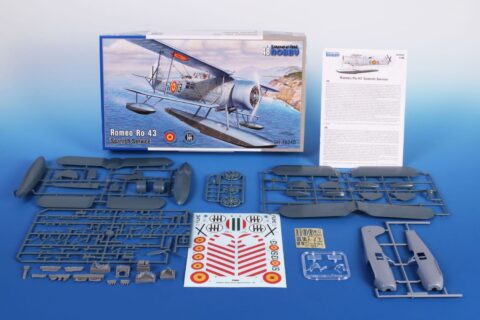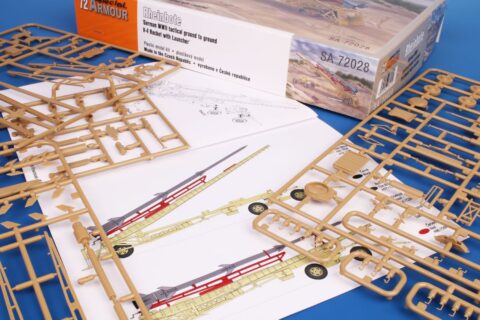Industry News
Special Hobby News Mar 2025
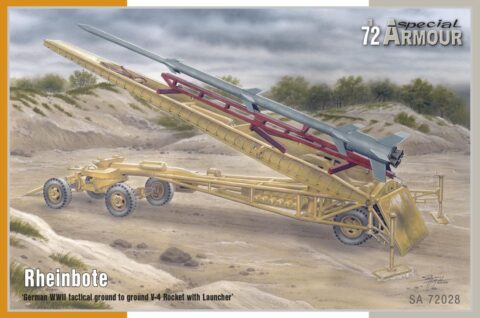
Rheinbote ‘German WWII tactical ground to ground V-4 Rocket with Launcher’ 1/72
During World War II, many remarkable weapons were developed in Germany. One of them was a four-stage tactical surface-to-surface missile with solid-fuel engines, called the Rheinbote. It was developed at Rheinmetall-Borsig by a team led by technical director Klein and Dr. Vüllers. Development took place from 1941 to 1944. For the Wehrmacht, the work was coordinated by Oberstleutnant Alfred Tröller.
The rocket was made of sheet steel, the diameter of the individual stages decreased from the first to the fourth stage. It carried an explosive warhead weighing 40 kg. However, there was only 20 kg of explosives itself. Originally, the rocket was to be launched from a modified 88 mm Flak gun mount, but in the end a modified Meilerwagen carrier was used. The rocket’s range was up to 200 km. Serial production, approved by Gen. Kammler, began production in the autumn of 1944. 300 were ordered. Only about 220 were produced by the end of the war. The rockets were tested by the Versuchkommando Tröller test unit. This was transformed into a single combat unit, Artillerie Abteilung 709. It was still led by Oberstleutnant Alfred Tröller. The Abteilung consisted of a staff, a supply platoon, a measuring and computing platoon, and two rocket batteries. Each battery consisted of four Meilerwagen launchers and Sd.Kfz 8 tractors. It entered combat on December 24, 1944, near Nuspeet, Netherlands, when it fired 24 rockets at Antwerp. It continued to fight and fired more than 200 missiles by the end of the war. Since Oberstleutnant Alfred Tröller and his men did not know the exact impact locations, most of the missiles missed their target. Gen. Kammler stopped the development of the Rheinbot in February 1944, as it was clear that it was no longer useful with the end of the war. Some historians state that, alongside the V-1 aircraft missile, the V-2 rocket and the V-3 long-range cannon with reactive shells, the Rheibote ranks among the Vergeltungswaffe, designated V-4.
– 1/72 Rheinbote has never been kitted before
– V-4 part of the so-called V-weapons – retaliatory weapons
– subject with both interesting concept and history
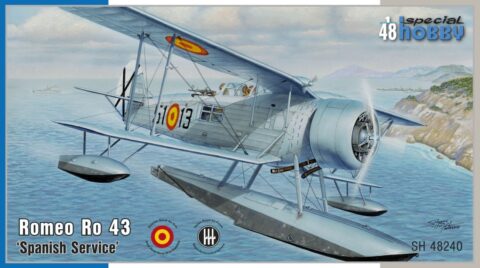
Romeo Ro 43 ‘Spanish Service’ 1/48
In September 1943 it became clear that Italy was defeated. A group of Italian navy aviators knew it, too, and so they decided to fly eight IMAM / Romeo Ro.43 floatplanes from La Spezia to La Maddalena. They took off the moment the German troops started to take over the local armoury. Two of them were shot down, remaining six managed to reach the Spanish Balearic Islands. The Ro.43s were interned there and later put to service with the Spanish Naval Air Force designated HR.7.
Our kit contains a sheet of decals covering one machine wearing the original Italian markings and also one machine as flown later in Spanish colours.
– very interesting colour options
– remarkable history
– also contains detail resin parts and photo etches
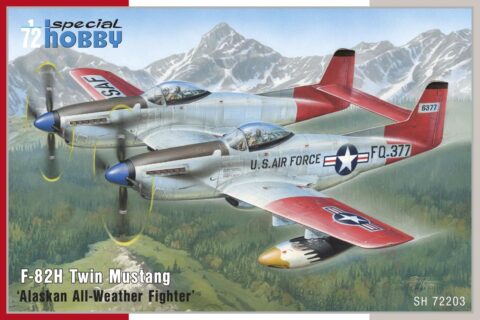
F-82H Twin Mustang “Alaskan All Weather Fight 1/72
The twin-engine F-82 fighter aircraft became famous for its participation in the Korean War. But Twin Mustangs also served in the USA. Especially in Alaska, they formed the backbone of the fighter defense of the USA until the arrival of superior all-weather fighter jets. The threat of Soviet bombers with nuclear weapons on board was very topical at that time. For service in the harsh north, the already built F-82F and F-82G aircraft were modified and designated F-82H.
The Twin Mustang model includes four sprues of injection-moulded parts, injection-moulded canopy hoods, detailed PUR parts and etchings. The decals offer four Alaskan aircraft, two of them in black, the remaining two in Alaskan anti-camouflage finish, i.e. aircraft in natural metal with wing tips and tail surfaces in red. Two of the aircraft have underwing fuel tanks decorated with drawings of bald eagle heads.
– eye-catching colourful schemes
– interesting concept of the airframe
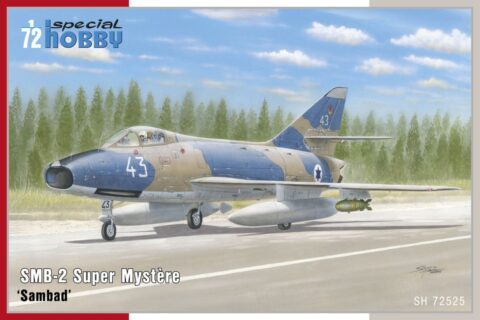
SMB-2 Super Mystere ‘Sambad’ 1/72
The French SMB-2 Super Mystere jet fighter became the first Western European fighter to break the speed of sound in level flight. Until the advent of the Mirage III, the SMB-2 was the most powerful French fighter. After the introduction of the Mirage III, the Super Mysteres were transferred to fighter-bomber units, where they served for a very long time. The SMB-2 was also exported to Israel. In the battles against Arab superiority, the SMB-2 proved its worth, but, like in France, they were used as fighter-bombers after the delivery of the Mirage III fighters. In Israel, the SMB-2 was modified by installing an American engine. After being decommissioned from the IAF, the remaining Israeli SMB-2s were delivered to Honduras. The kit contains mouldings with both engine variants. The decal sheet, originally used in kit SH72417, offers two Israeli machines with the original Atar 9B engine and one Israeli machine with the American Pratt & Whitney J52 engine.
– highly detailed model
– interesting colourful schemes
– also available M72001 pre-cut masks set
HobbyLink International
eBay Store


